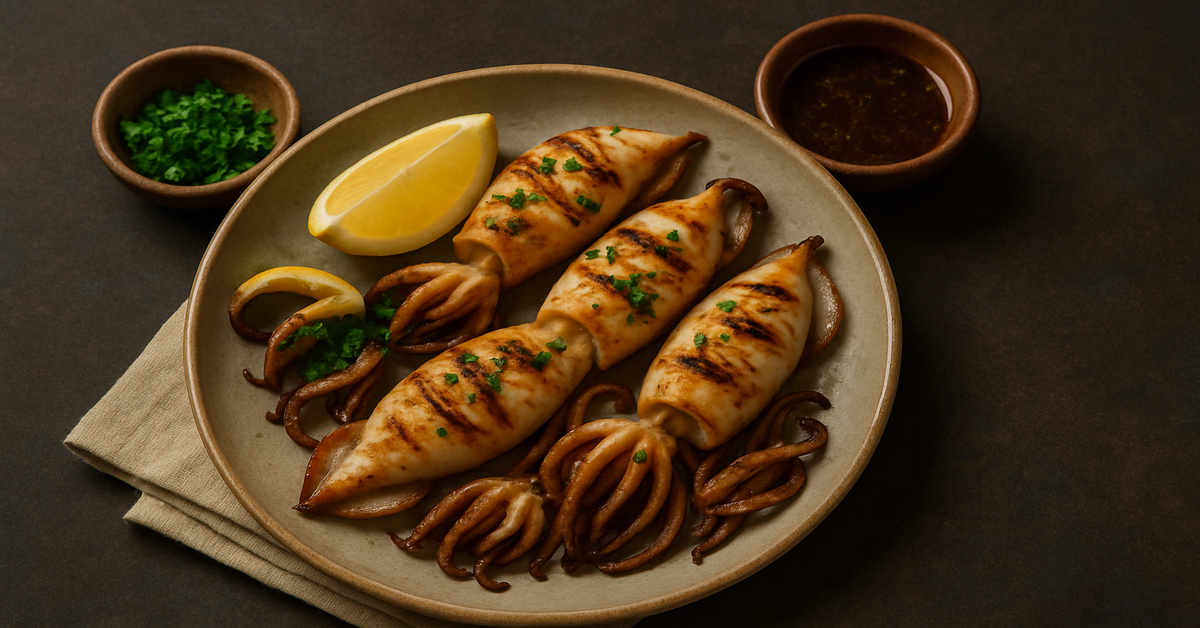
Calamariere is a concept that brings together the world of squid-based cuisine, culinary traditions, nutrition, and cultural symbolism. Derived from the Italian word calamari, meaning squid, the term calamariere has evolved as a reference to dishes, preparations, and even lifestyle aspects connected to squid in gastronomy. Squid has been cherished for centuries across Mediterranean, Asian, and coastal cultures. It represents both nourishment and cultural expression, embodying a food that is versatile, flavorful, and deeply embedded in traditional diets.
This article explores calamariere in its broadest sense—its culinary identity, nutritional profile, cooking methods, cultural value, economic importance, sustainability issues, and role in modern gastronomy. By understanding calamariere, readers can appreciate how one ingredient transcends the plate, becoming a bridge between food, culture, and health.
1. The Origins of Calamariere
The idea of calamariere cannot be separated from the history of squid consumption. Ancient civilizations along the Mediterranean coast valued squid for its abundance, easy preservation, and adaptability in cooking. Greeks, Romans, and Phoenicians dried or grilled squid, considering it both a delicacy and a survival food.
In Italy, the word calamaro referred to squid, with its name resembling the “calamarium” (ink well), a container for ink, because squid produce ink. Over time, the culinary identity expanded into calamariere, symbolizing more than just a dish—it became a representation of seafood artistry, cultural pride, and nutritional tradition.
2. Nutritional Profile of Calamariere
One of the most appealing aspects of calamariere lies in its nutritional richness. Squid is a source of high-quality protein, essential minerals, and beneficial compounds.
Nutritional Table (per 100g of cooked squid)
| Nutrient | Amount | Health Role |
|---|---|---|
| Calories | 92 kcal | Low in energy, ideal for balanced diets |
| Protein | 15 g | Muscle repair, immune support |
| Fat | 1.4 g | Mostly healthy unsaturated fats |
| Cholesterol | 233 mg | Needs moderation but balanced by low total fat |
| Omega-3 Fatty Acids | 0.5 g | Heart health, anti-inflammatory |
| Vitamin B12 | 1.3 µg | Nervous system, red blood cell production |
| Iron | 0.8 mg | Oxygen transport |
| Zinc | 1.5 mg | Immune defense, skin health |
| Selenium | 44 µg | Antioxidant, thyroid support |
Squid provides high nutrient density in small portions, making calamariere not just a culinary delight but also a health-promoting food.
3. Culinary Identity of Calamariere
Calamariere has been embraced worldwide because squid adapts to a wide variety of cooking styles.
Popular Preparations of Calamariere
- Fried Calamariere: Classic rings, often breaded and deep-fried.
- Grilled Calamariere: Lightly seasoned, grilled whole or sliced.
- Stuffed Calamariere: Squid tubes filled with rice, herbs, and meat.
- Calamariere in Stews: Mediterranean tomato-based sauces.
- Asian-Style Calamariere: Stir-fried with soy, chili, and ginger.
- Calamariere Salads: Mixed with lemon, olive oil, and vegetables.
The adaptability of squid allows calamariere to carry regional flavors, whether Mediterranean herbs, Asian spices, or Latin American marinades.
4. Cultural Importance of Calamariere
Food is never just about taste—it is a cultural marker. Calamariere holds cultural importance in several regions:
- Italy and Spain: Festivals often feature fried calamari as a staple.
- Japan: Squid is eaten raw as sashimi or sushi, symbolizing delicacy.
- Philippines: Adobo calamari is a household favorite.
- Greece: Grilled calamari at seaside taverns symbolizes hospitality.
The symbolic meaning of calamariere extends to the sea itself, representing connection to nature, sustenance, and maritime identity.
5. Calamariere and Gastronomy
Modern gastronomy has elevated calamariere to fine-dining status. Chefs experiment with techniques like sous-vide, molecular gastronomy, and artistic plating to reimagine squid. Restaurants showcase calamariere as both traditional comfort food and avant-garde delicacy.
Its versatility makes it suitable for casual dining, festive occasions, and even health-conscious menus.
6. Economic Importance of Calamariere
Squid fisheries contribute significantly to global seafood markets. The calamariere economy includes:
- Fishing and Aquaculture: Major sources in Mediterranean, Japan, South America.
- Trade and Export: Frozen, dried, and processed calamari products circulate globally.
- Tourism: Coastal regions profit from calamariere dishes as culinary attractions.
7. Sustainability of Calamariere
With rising demand, sustainability is a key concern. Overfishing and poor practices threaten squid populations. Sustainable calamariere emphasizes:
- Responsible fishing quotas.
- Eco-friendly gear reducing bycatch.
- Promotion of aquaculture for steady supply.
- Consumer awareness about sourcing certified seafood.
Sustainable Comparison Table
| Practice | Unsustainable Impact | Sustainable Alternative |
|---|---|---|
| Overfishing | Population decline | Regulated quotas |
| Bottom trawling | Habitat destruction | Selective hand lines |
| Poor waste management | Marine pollution | Eco-friendly packaging |
| Lack of certification | Consumer confusion | Eco-labels (MSC, ASC) |
8. Health Benefits of Calamariere
Key Benefits
- Supports Heart Health: Omega-3 fatty acids promote cardiovascular protection.
- Boosts Immunity: Zinc and selenium strengthen defenses.
- Improves Brain Function: Vitamin B12 supports nerve health.
- Supports Weight Management: Low calorie and high protein profile.
- Skin and Hair Health: Rich in antioxidants and proteins.
9. Risks and Considerations
While calamariere offers benefits, there are considerations:
- Cholesterol content requires moderation for sensitive individuals.
- Food safety issues like improper storage may cause foodborne illness.
- Allergies to shellfish can extend to squid.
Balanced consumption within a healthy diet ensures maximum benefits with minimal risks.
10. Calamariere in Modern Lifestyle
The role of calamariere extends beyond dining tables.
- Cultural Experiences: Shared in festivals, celebrations, and community gatherings.
- Wellness Diets: Featured in Mediterranean diet, one of the world’s healthiest.
- Culinary Education: Highlighted in culinary schools as a versatile protein.
- Innovation: Used in snacks, canned products, and creative seafood blends.
11. Future of Calamariere
The future of calamariere rests on sustainability, innovation, and awareness. As climate change affects marine life, adaptive fishing practices and aquaculture will be crucial. In culinary terms, we may see plant-based calamariere alternatives alongside traditional squid to satisfy ethical and environmental demands.
The cultural thread of calamariere, however, will remain timeless—an emblem of food’s power to connect tradition, nutrition, and creativity.
Conclusion
Calamariere is more than food—it blends taste, health, and tradition. Nutritious, versatile, and culturally rich, it continues to connect people worldwide while reminding us of the importance of sustainability and mindful seafood choices.
FAQs
1. What does calamariere mean?
Calamariere refers to squid-based dishes, preparations, and the broader culinary and cultural significance of squid in gastronomy.
2. Is calamariere healthy to eat?
Yes, it is rich in protein, vitamins, and omega-3 fatty acids, though it should be eaten in moderation due to cholesterol.
3. How is calamariere prepared?
It can be fried, grilled, stuffed, stewed, or served raw depending on cultural and regional cooking traditions.
4. Is calamariere sustainable?
It can be sustainable if sourced from regulated fisheries or certified aquaculture practices. Responsible consumer choices matter.
5. Which cultures value calamariere most?
Mediterranean, Japanese, Greek, and Southeast Asian cultures have deeply integrated calamariere into their traditional cuisines.






